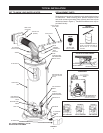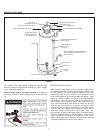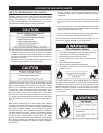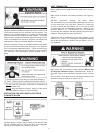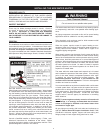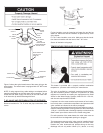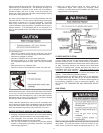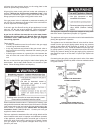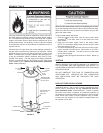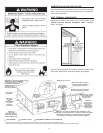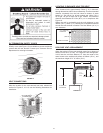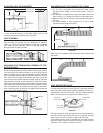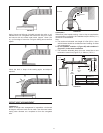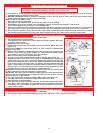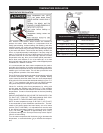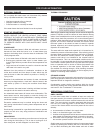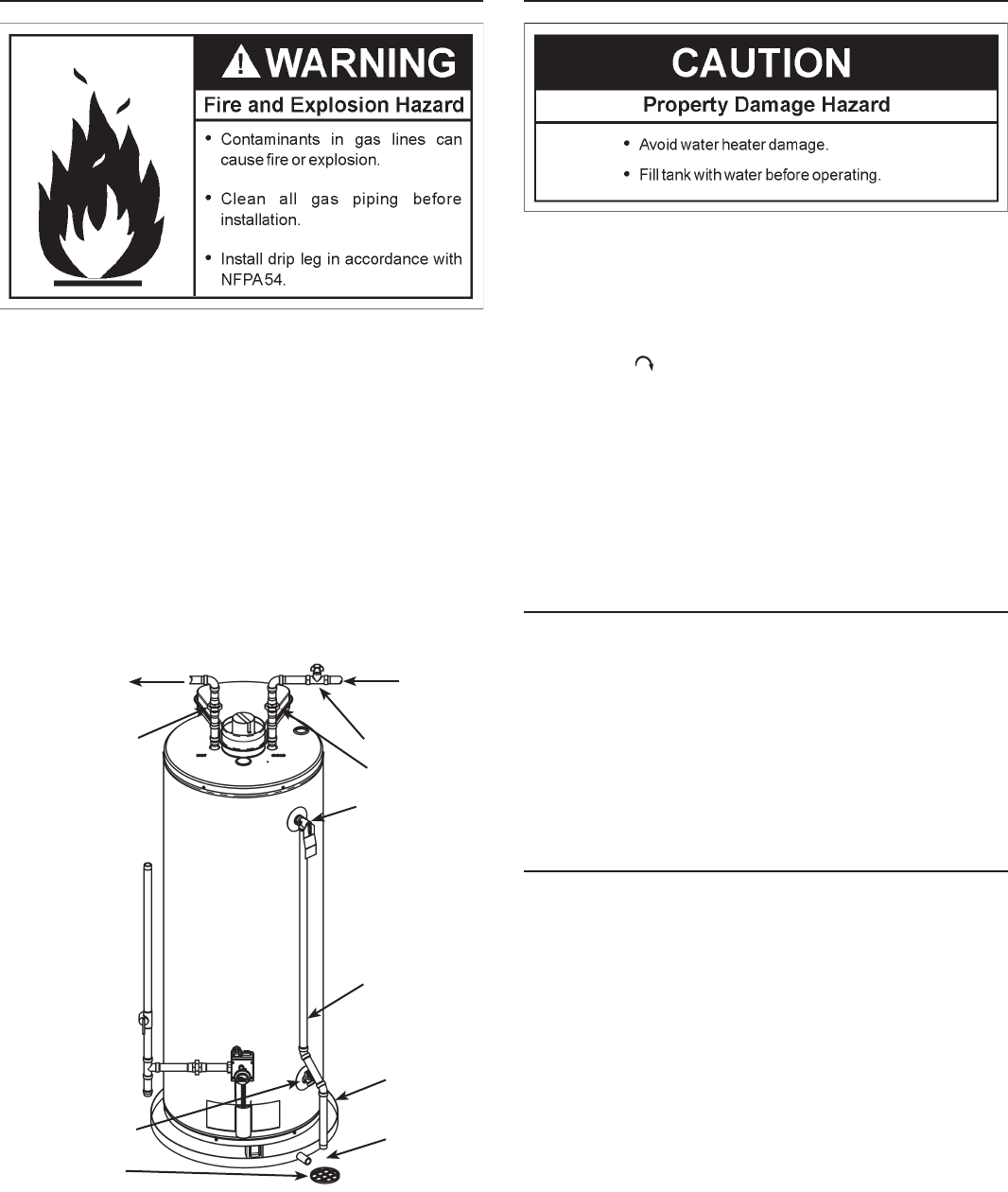
13
SEDIMENT TRAPS
A drip leg (sediment trap) shall be installed as close to the inlet of
the water heater as practical at the time of water heater installa-
tion. The sediment trap shall be either a tee fi tting with a capped
nipple in the bottom outlet or other device recognized as an ef-
fective sediment trap. If a tee fi tting is used, it shall be installed
in conformance with one of the methods of installation shown in
Figures 8 and 9.
Contaminants in the gas lines may cause improper operation of
the gas control valve that may result in fi re or explosion. Before
attaching the gas line be sure that all gas pipe is clean on the
inside. To trap any dirt or foreign material in the gas supply line,
a drip leg (sometimes called a sediment trap) must be incor-
porated in the piping. The drip leg must be readily accessible.
Install in accordance with the “Gas Piping” section. Refer to the
current edition of the “Natural Gas and Propane Installation
Code” CAN/CSA-B149.1
HOT WATER
OUTLET
COLD WATER
INTLET
DRAIN VALVE
DISCHARGE PIPE
(DO NOT CAP
OR PLUG)
DRAIN PAN
UNION
SHUTOFF
VALVE
FLOOR DRAIN
TEMPERATURE
AND PRESSURE
RELIEF VALVE
UNION
6” MAXIMUM
AIR GAP
FIGURE 10
FILLING THE WATER HEATER
Never use this water heater unless it is completely full of water.
To prevent damage to the tank, the tank must be fi lled with water.
Water must fl ow from the hot water faucet before turning “ON”
gas to the water heater.
To fi ll the water heater with water:
1. Close the water heater drain valve by turning the handle
clockwise (
). The drain valve is on the lower front of the
water heater.
2. Open the cold water supply valve to the water heater.
NOTE: The cold water supply valve must be left open when
the water heater is in use.
3. To insure complete fi lling of the tank, allow air to exit by open-
ing the nearest hot water faucet. Allow water to run until a
constant fl ow is obtained. This will let air out of the water
heater and the piping.
4. Check all water piping and connections for leaks. Repair as
needed.
VENTING
NEVER OPERATE THE HEATER UNLESS IT IS VENTED TO
THE OUTDOORS AND HAS ADEQUATE AIR SUPPLY TO
AVOID RISKS OF IMPROPER OPERATION, FIRE, EXPLOSION
OR ASPHYXIATION.
DO NOT OBSTRUCT THE FLOW OF COMBUSTION AND
VENTILATING AIR. ADEQUATE AIR FOR COMBUSTION
AND VENTILATION MUST BE PROVIDED FOR SAFE
OPERATION.
HIGH ALTITUDE INSTALLATIONS
Installations above 7,700 ft. (2347 m) require replacement of the
burner orifi ce in accordance with the “Natural Gas and Pro-
pane Installation Code” CAN/CSA-B149.1. Failure to replace
the orifi ce could result in improper and ineffi cient operation of
the appliance, producing carbon monoxide gas in excess of safe
limits, which could result in serious personal injury or death.
Contact your gas supplier for any specifi c changes which may
be required in your area.



